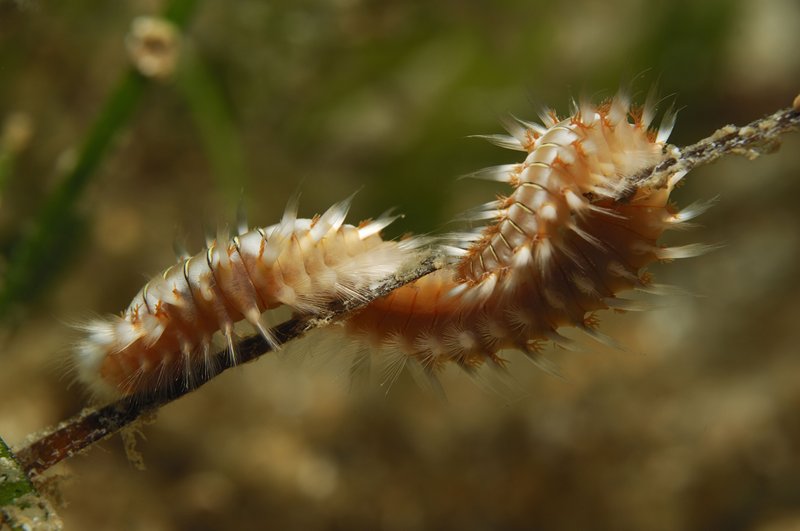
Bristle worms are often found in both saltwater and freshwater environments. They belong to the class Polychaeta, which means “many bristles.” These bristles, made of tiny hairs or setae, give them their name. If you’re thinking about having bristle worms in your tank or are simply curious about their life cycle, understanding their spawning habits is crucial. It can help you maintain the health of your aquarium and appreciate these often-overlooked creatures.
Understanding Bristle Worms and Their Habitat
Bristle worms thrive in various environments, from coral reefs to muddy substrates in the ocean. They are scavengers, eating decaying organic material, which helps keep the underwater ecosystem balanced. You might be wondering what they look like. Well, they have elongated bodies, which can range from a few inches to several feet long, depending on the species. Their bristles can also come in different colors, adding a splash of life to your tank.
In terms of habitat, bristle worms usually prefer areas with plenty of hiding spaces, like crevices or beneath rocks. This provides them protection from predators. If you’re considering adding them to your aquarium, make sure it mimics their natural environment. It’s like setting up a tiny underwater city for them to thrive in!
What Triggers Bristle Worm Spawning?
Bristle worm spawning is often driven by environmental factors. Changes in temperature, salinity, and the moon’s phase can signal these creatures to reproduce. Think of it as nature’s way of syncing up their life cycles with the broader ecosystem. For instance, during warmer months or after heavy rains, bristle worms may feel the urge to spawn.
Interestingly, many species of bristle worms are known to spawn simultaneously. This synchronous spawning increases the chances of fertilization, much like how some flowers bloom together in the spring. It can look quite spectacular when the waters fill with their eggs or larvae, creating a cloud of life that can be mesmerizing to observe.
How Often Do Bristle Worms Spawn?
You might be curious about how frequently these creatures reproduce. Generally, bristle worms can spawn several times a year, depending on their environment and species. Some may do it as often as every few weeks during optimal conditions. Others might be more seasonal, waiting for specific environmental cues.
When bristle worms spawn, they release their eggs into the water, which then float freely. This process can last for hours, making it an exciting event for anyone fortunate enough to witness it. If you have these worms in your aquarium, keeping an eye on water conditions can clue you in on when they might decide to spawn.
What to Expect During Spawning Events
During a **spawning event**, you can expect to see a lot of activity. As the worms release their eggs, you might notice a cloud in the water that resembles a slightly murky patch. This cloud is a mix of eggs and sperm, which is vital for fertilization. For marine enthusiasts, it’s an incredible sight, showcasing nature’s cycle of life.
It’s worth noting that not all of the eggs will survive. Predation and environmental factors play a role in how many will develop into mature worms. If you’re trying to maintain a healthy aquarium, this is where careful monitoring comes into play. Ensuring stable water conditions and having a balanced ecosystem can help more of those eggs reach maturity.
Managing Bristle Worm Populations in Your Aquarium
If you have bristle worms in your aquarium, you’re probably wondering how to manage their population. While they are beneficial for breaking down organic material, too many can lead to problems. Essentially, they can outcompete other creatures for food, potentially upsetting the balance of your tank.
To manage their numbers, consider feeding your fish properly. Overfeeding can lead to an increase in the bristle worm population since they thrive on excess food. Regular cleaning and maintenance of the tank are also crucial. Keeping the environment tidy helps control worm numbers while ensuring all inhabitants are healthy.
Identifying Common Issues with Bristle Worms
While bristle worms are generally harmless, sometimes they can cause issues in aquariums. If you notice an excessive number of them, it may indicate a problem, such as overfeeding or poor water quality. Another common issue is irritation; their bristles can cause minor skin problems if they come into contact with your skin.
If you find yourself dealing with these issues, the first step is to assess your tank conditions. Testing the water quality and adjusting feeding habits can help restore balance. Sometimes, introducing natural predators, like certain types of angels or wrasses, can also help control the bristle worm population without harming the overall ecosystem.
Bristle worms are fascinating creatures with unique spawning habits that can provide a glimpse into the intricate web of marine life. Understanding how often they spawn and what to expect during those events helps you appreciate their role in your aquarium—or in nature as a whole.
By being proactive in managing their population and maintaining a balanced environment, you can support the health of your aquarium. So next time you’re peering into the tank, think of the bristle worms as tiny unsung heroes—working hard to keep the underwater world thriving. Embrace the wonders of nature, and who knows? You might find yourself fascinated by these little critters, watching their life cycle unfold right before your eyes!

